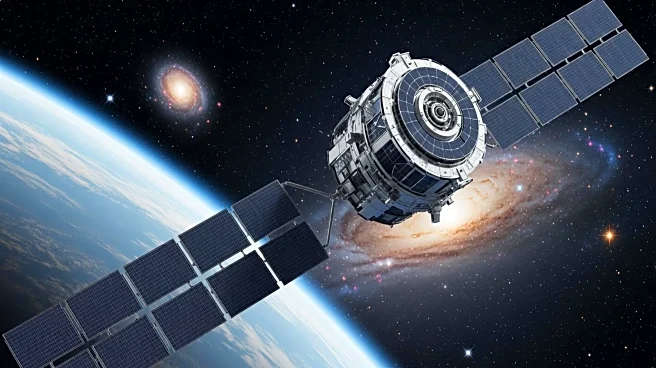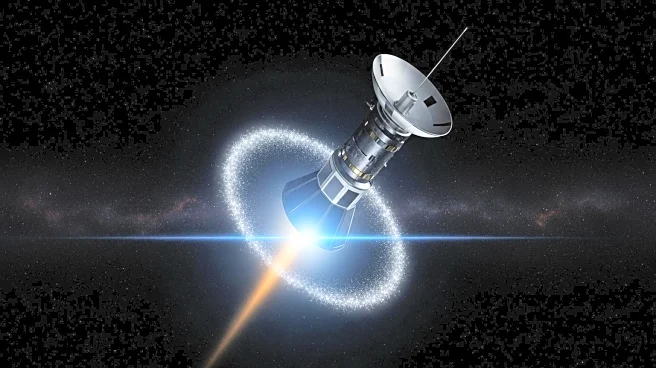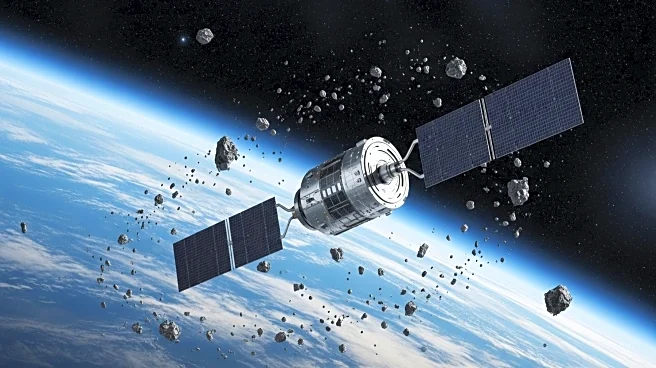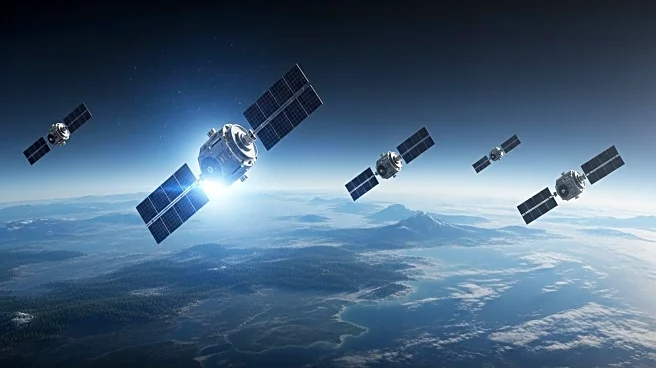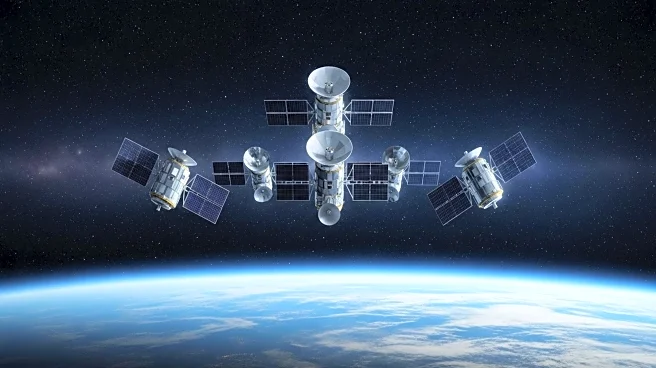What's Happening?
Atomic-6, a company based in Marietta, Georgia, has introduced a new technology called 'Space Armor' designed to protect satellites and astronauts from the dangers posed by space debris. This innovative
composite material is manufactured using a proprietary fiber-to-resin method, offering a lightweight and strong solution for micrometeoroid and orbital debris (MMOD) shielding. Space debris, which can travel at speeds exceeding 16,000 mph, poses a significant threat to spacecraft, potentially damaging fuel tanks, batteries, and other critical structures. Space Armor not only provides physical protection but also maintains communications transparency, ensuring mission-critical radio communications remain intact. The development of Space Armor took approximately 18 months, and it has undergone extensive hypervelocity testing on Earth. Atomic-6 plans to deploy Space Armor tiles in orbit with satellite customers next year, utilizing the existing orbital debris environment as a natural testing ground.
Why It's Important?
The introduction of Space Armor is a significant advancement in the ongoing battle against space debris, which poses a growing threat to both manned and unmanned space missions. As the number of satellites and space missions increases, the risk of collisions with debris also rises, potentially leading to costly damages and mission failures. By providing a more effective shielding solution, Space Armor could enhance the safety and longevity of space assets, reducing the risk of catastrophic failures. This development is crucial for the future of space exploration and satellite operations, as it addresses a critical challenge in maintaining the integrity of space infrastructure. The ability to protect communication systems while shielding against debris impacts is particularly valuable, ensuring uninterrupted operations and data transmission.
What's Next?
Atomic-6 plans to send Space Armor tiles into orbit with satellite customers in the coming year. This deployment will serve as a real-world test of the technology's effectiveness in the harsh conditions of space. The company aims to leverage the existing orbital debris environment to validate the performance of Space Armor, using it as a natural analogue to hypervelocity testing conducted on Earth. Success in these tests could lead to wider adoption of Space Armor across the space industry, potentially setting a new standard for debris protection. As space exploration and satellite deployment continue to expand, the demand for effective debris shielding solutions is likely to grow, positioning Atomic-6 as a key player in this critical area.
Beyond the Headlines
The development of Space Armor highlights the broader issue of space debris management, which is becoming increasingly important as the number of objects in orbit continues to rise. Effective debris shielding not only protects individual spacecraft but also contributes to the overall sustainability of space operations. By reducing the risk of debris-related incidents, technologies like Space Armor can help prevent the creation of additional debris, which can exacerbate the problem. This innovation also underscores the importance of continued investment in research and development to address emerging challenges in space exploration. As the space industry evolves, the need for advanced materials and technologies will be crucial in ensuring safe and sustainable operations.




